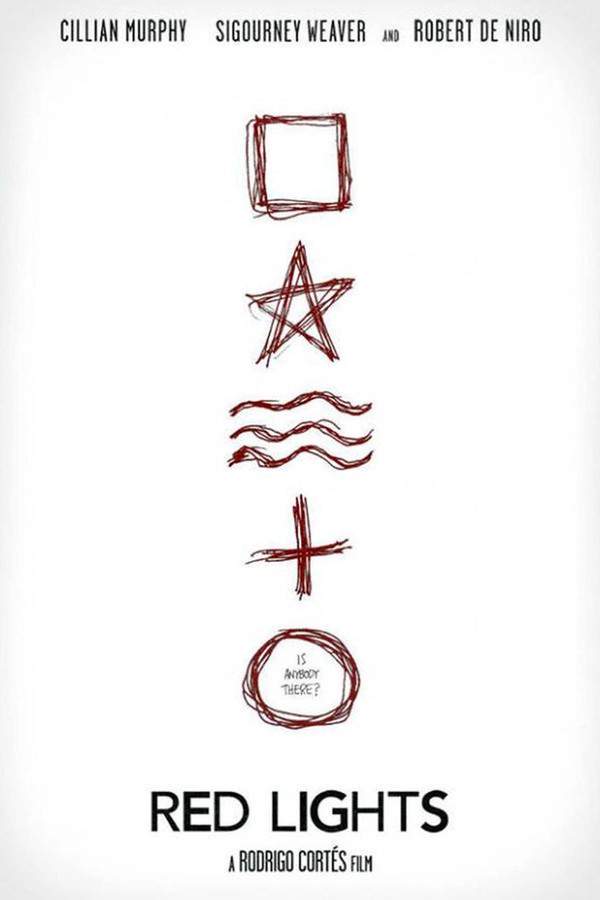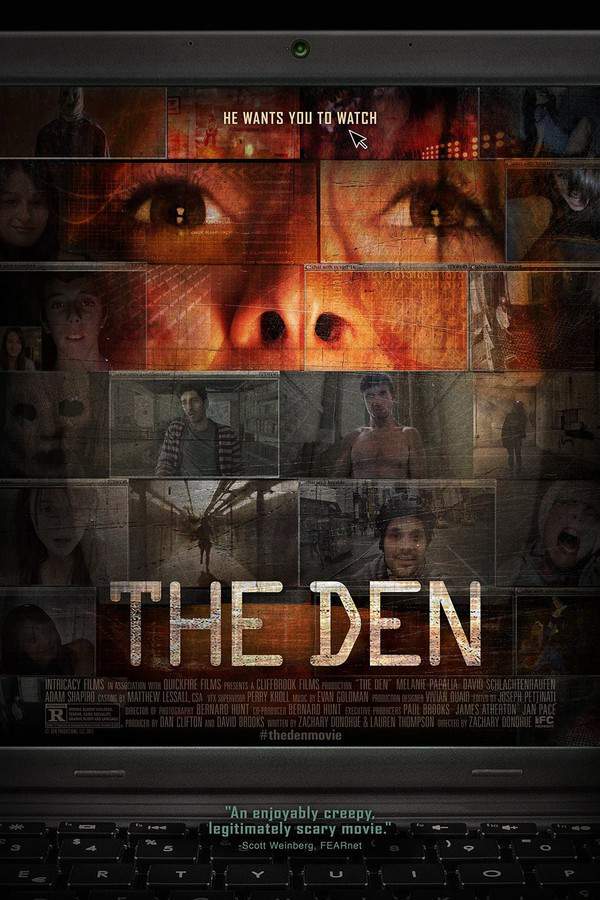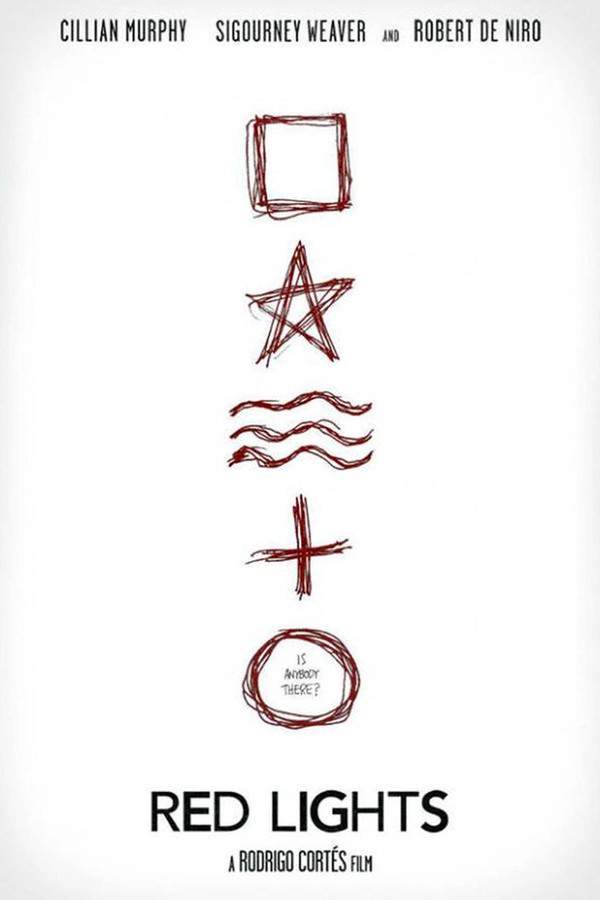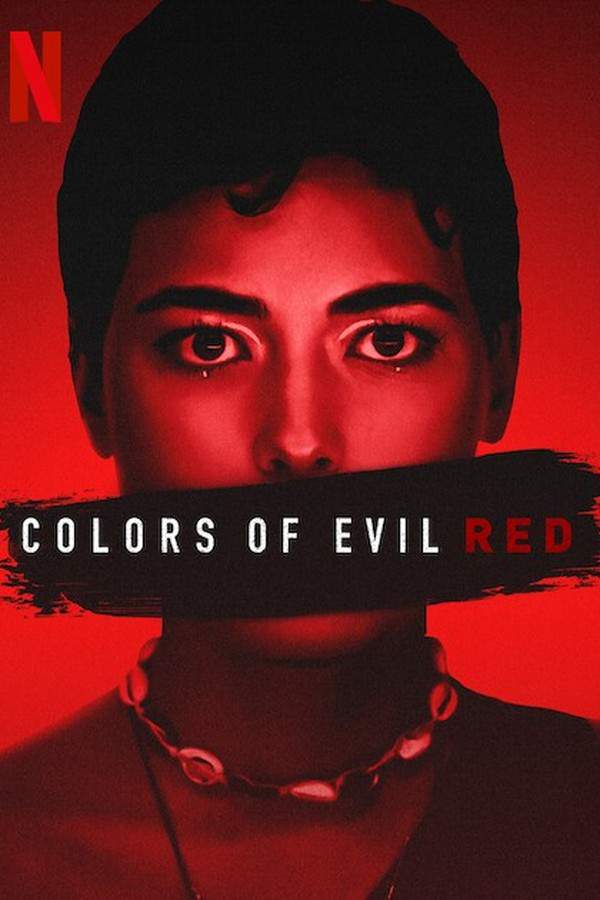Red Rooms 2024
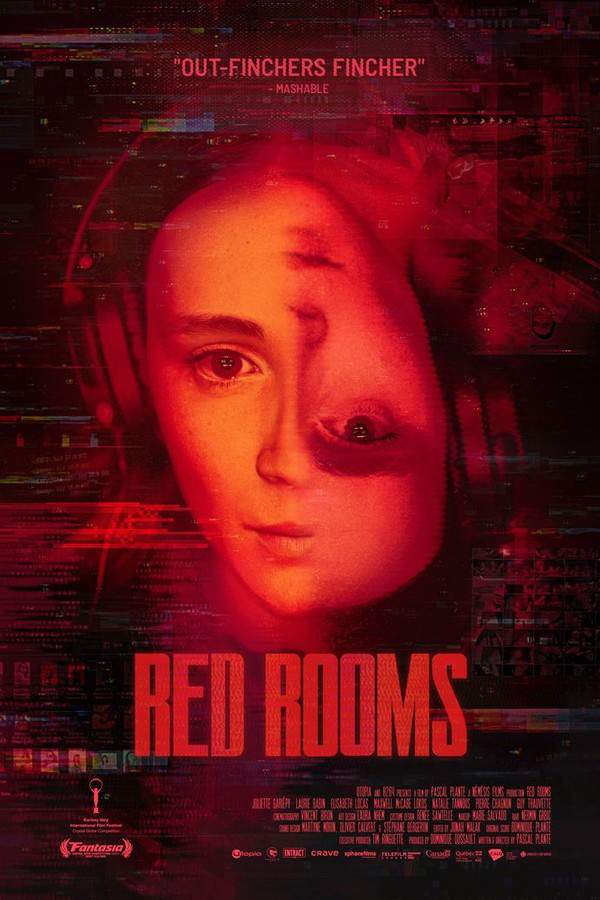
Haunted by the infamous serial killer Ludovic Chevalier, Kelly-Anne becomes fixated on attending his trial. While a connection with another attendee offers a temporary respite from her isolation, the intensity of the proceedings and Chevalier's unsettling demeanor pull her further into a disturbing obsession.
Does Red Rooms have end credit scenes?
No!
Red Rooms does not have end credit scenes. You can leave when the credits roll.
Meet the Full Cast and Actors of Red Rooms
Explore the complete cast of Red Rooms, including both lead and supporting actors. Learn who plays each character, discover their past roles and achievements, and find out what makes this ensemble cast stand out in the world of film and television.

Charlotte Aubin
Actrice Talk Show

Guy Thauvette
Juge Marcel Godbout

Juliette Gariépy
Kelly-Anne

Laurie Babin
Clementine

Elisabeth Locas
Francine Beaulieu

Natalie Tannous
Maître Chedid - Couronne

Pierre Chagnon
Maître Fortin - Défense

Myriam Baillargeon
Mère de Kim

Christophe Baril
Ambulancier #1

Raïssa Beaudoin
Journaliste télé #2 CN24

Sebastien Beaulac
Agent de sécurité #2

Fernando Becerra
Caméraman télé journaliste #1

Chantal Bellavance
Assistante de la couronne

Maria Belmonte
Constable spécial #4

Simone Bilodeau
Kim - voix

Sylvain G. Bissonnette
Huissier-Audiencier

Raphaëlle Blanchette
Justine - photo

Jérémie Bouchard
Juré #6

Vincent Boucher
Père de Justine
External Links and Streaming Options
Discover where to watch Red Rooms online, including streaming platforms, rental options, and official sources. Compare reviews, ratings, and in-depth movie information across sites like IMDb, TMDb, Wikipedia or Rotten Tomatoes.
Ratings and Reviews for Red Rooms
See how Red Rooms is rated across major platforms like IMDb, Metacritic, and TMDb. Compare audience scores and critic reviews to understand where Red Rooms stands among top-rated movies in its genre.

The Movie Echo Score
The film’s strength lies in its austere exploration of online obsession, characterized by measured pacing and cool, dispassionate storytelling. Critics highlighted its tension built on absence of explicit violence and the unsettling, icky atmosphere that lingers after viewing. Several users praised the striking lead performance and thought-provoking critique of true-crime fandom, while others noted an underwhelming conclusion and a protagonist whose motivations feel obscure. Overall, 'Red Rooms' is a compelling yet divisive thriller that emphasizes mood and interrogation over traditional payoff.
The Movie Echo Score Breakdown for Red Rooms

Art & Craft
In terms of art and craft, the film excels in its precise direction and austere cinematography. Reviewers praised the controlled framing, understated color palette, and formal editing that amplify the claustrophobic mood. The production design subtly evokes the clinical tone of true-crime obsession without relying on overt set pieces. Overall, the film’s visual discipline contributes significantly to its unsettling atmosphere.

Character & Emotion
When it comes to character and emotion, performances are compelling yet emotionally restrained. Juliette Gariépy’s stark, sphinx-like portrayal was frequently lauded, lending authenticity to the protagonist’s detached obsession. However, some viewers found the character’s inner motivations insufficiently developed, which lessened emotional resonance for them. Despite the ambiguity heightening intrigue, the heroine’s dispassion can create distance rather than empathy.

Story & Flow
In terms of story and flow, the film offers an original take on true-crime obsession with deliberate, measured pacing that sustains tension. Critics noted the narrative’s methodical build-up and surprising conclusion, while some users felt the plot became predictable and the ending lost momentum. The courtroom-tech interplay adds novelty, but the uneven payoff may leave viewers divided on its overall coherence and engagement.

Sensory Experience
When it comes to sensory experience, 'Red Rooms' leverages a restrained soundtrack and precise sound design to cultivate unease. The absence of explicit gore amplifies the squirm factor, and the cool visual style underscores the clinical tone. Reviewers highlighted how the methodical auditory cues and stark imagery coalesce to heighten suspense. Overall, the sensory approach is effective and immersive.

Rewatch Factor
In terms of rewatch factor, the film’s lingering unease and thematic depth invite repeat viewings. The understated tension and ambiguous character motivations may reward viewers with new insights upon subsequent watches. However, its restrained narrative and sparse emotional access could limit appeal for those seeking more conventional thrills. As such, rewatch value varies with audience preference.

80
Metascore
7.4
User Score


96%
TOMATOMETER

76%
User Score

/10
IMDb Rating

70
%
User Score

3.9
From 1K fan ratings

0.00/5
Take the Ultimate Red Rooms Movie Quiz
Challenge your knowledge of Red Rooms with this fun and interactive movie quiz. Test yourself on key plot points, iconic characters, hidden details, and memorable moments to see how well you really know the film.
Red Rooms Quiz: Test your knowledge about the intriguing thriller 'Red Rooms', focusing on its characters, plot twists, and dark themes.
Who is the accused in the trial that Kelly-Anne attends?
Ludovic Chevalier
Clementine
Camille Beaulieu
Francine Beaulieu
Show hint
Full Plot Summary and Ending Explained for Red Rooms
Read the complete plot summary of Red Rooms, including all major events, twists, and the full ending explained in detail. Explore key characters, themes, hidden meanings, and everything you need to understand the story from beginning to end.
In the bustling city of Montreal, a captivating yet chilling story unfolds as fashion model Kelly-Anne finds herself deeply entangled in the notorious trial of Ludovic Chevalier, a man facing grave accusations of broadcasted murder involving three innocent teenage girls in what has come to be known as the “Red Room”—a seedy corner of the dark web where audiences pay to witness horrific snuff films. With the case garnering sensational attention from media outlets and countless “fans” of Chevalier who believe in his innocence due to his seemingly gentle disposition, the situation serves as a perfect storm for a gripping narrative of obsession, ethics, and the human psyche.
Despite the FBI having provided evidence, including two snuff films, that link Chevalier to these heinous acts, the killer’s use of a balaclava raises doubts about his identity. Indeed, disturbing evidence looms: the discovery of the girls’ remains in Chevalier’s backyard adds another layer of complexity to the unfolding drama. As the courtroom becomes a spectacle, Clementine, a young woman drawn to the courtroom proceedings, strikes up an unexpected friendship with Kelly-Anne. This bond forms after Clementine—who journeyed to Montreal from afar, motivated by a desire to witness the trial—reveals her own challenging circumstances, including her stay in a local homeless shelter.
As the two women grow closer, the contrasts in their personalities become stark: while Clementine passionately defends Chevalier’s character, insisting that his innocence must be proven, Kelly-Anne maintains a colder, more analytical stance. She reveals her unconventional source of income through online gambling and unveils her tech-savvy nature as the programmer behind her own AI, Guinevere. Yet, hidden beneath the surface, Kelly-Anne has embarked on a far more sinister path by cyber-stalking Francine Beaulieu, the grieving mother of Camille Beaulieu—the youngest victim whose snuff video remains elusive to authorities.
As the trial progresses and the tense moment approaches for the court to watch the notorious snuff films, Clementine’s hopes of vindication for Chevalier are shattered when she learns that only the families of the victims will be allowed into the courtroom. Upset by her exclusion, she confides in Kelly-Anne about her desire to view the films, believing they could exonerate Chevalier. However, Kelly-Anne harbors a dark secret; unbeknownst to her new friend, she has already ventured onto the dark web to obtain the films. When the pair returns to Kelly-Anne’s apartment to watch the videos together, revealing the masked killer’s unmistakable blue eyes and unique gait identical to Chevalier, the harsh reality shatters Clementine’s hopeful naivety as she succumbs to tears over both the brutality of the content and the devastation of realizing the truth of Chevalier’s guilt. Faced with this unbearable revelation, Clementine decides to abandon the trial, seeking solace away from the horrid spectacle.
The tragic turning point occurs on Chevalier’s birthday when Kelly-Anne provocatively dons a schoolgirl uniform, resembling the attire of Camille at the time of her murder, complete with a wig and colored contact lenses, in a shocking stunt meant to draw attention to the courtroom. As she is forcibly removed, Chevalier’s eerie wave haunts her, serving as a catalyst for her subsequent downfall; she is subsequently terminated from her modeling agency, her reputation smeared by her impulsive actions.
Determined, Kelly-Anne reaches out to a hacker on the dark web who possesses Camille’s snuff film and is preparing to auction it. Successfully validating her identity, Kelly-Anne enters the bidding war, using her gambling skills to outmaneuver competitors and ultimately secure the film. The moment Kelly-Anne views the gathered footage, a euphoric high washes over her, but paranoia soon creeps in as she fears her activities may have been tracked through Guinevere, leading her to dispose of the AI product in a blender.
In a twisted culmination of her obsession, Kelly-Anne utilizes the confidential information gleaned from the dark web about Francine to bypass her home’s security system. In a horrifying act, she sneaks into Camille’s room dressed as the girl, taking selfies that reflect an unsettling fascination while leaving behind a flash drive containing the damning snuff film for Francine to discover later.
Eventually, news breaks that Francine has turned the flash drive into the police, leading to the undeniable evidence necessary to incriminate Chevalier. As he pleads guilty, the media can finally shift its focus from the trial’s sensationalism to the deep scars left on the families of the victims. Back in her hometown, Clementine attempts to reconcile her previous support for Chevalier during an interview, referring to herself as an “ex-groupie” while mourning the lives lost; she can now only think about the victims and the harrowing truths they leave behind.
Uncover the Details: Timeline, Characters, Themes, and Beyond!

Coming soon on iOS and Android
The Plot Explained Mobile App
From blockbusters to hidden gems — dive into movie stories anytime, anywhere. Save your favorites, discover plots faster, and never miss a twist again.
Sign up to be the first to know when we launch. Your email stays private — always.
Watch Trailers, Clips & Behind-the-Scenes for Red Rooms
Watch official trailers, exclusive clips, cast interviews, and behind-the-scenes footage from Red Rooms. Dive deeper into the making of the film, its standout moments, and key production insights.
Red Rooms Themes and Keywords
Discover the central themes, ideas, and keywords that define the movie’s story, tone, and message. Analyze the film’s deeper meanings, genre influences, and recurring concepts.
Red Rooms Other Names and Titles
Explore the various alternative titles, translations, and other names used for Red Rooms across different regions and languages. Understand how the film is marketed and recognized worldwide.
Similar Movies To Red Rooms You Should Know About
Browse a curated list of movies similar in genre, tone, characters, or story structure. Discover new titles like the one you're watching, perfect for fans of related plots, vibes, or cinematic styles.
Quick Links: Summary, Cast, Ratings, More

What's After the Movie?
Not sure whether to stay after the credits? Find out!
Explore Our Movie Platform
New Movie Releases (2025)
Famous Movie Actors
Top Film Production Studios
Movie Plot Summaries & Endings
Major Movie Awards & Winners
Best Concert Films & Music Documentaries
Movie Collections and Curated Lists
© 2025 What's After the Movie. All rights reserved.












